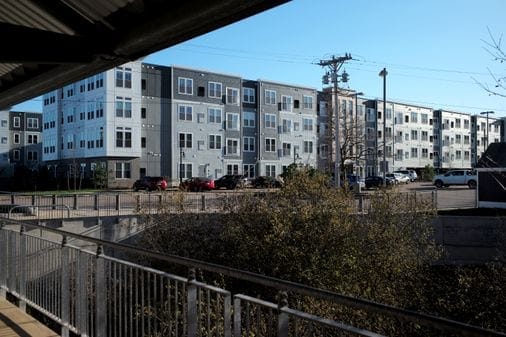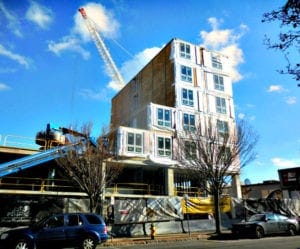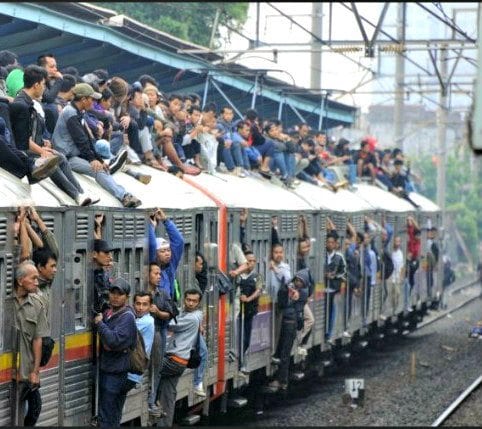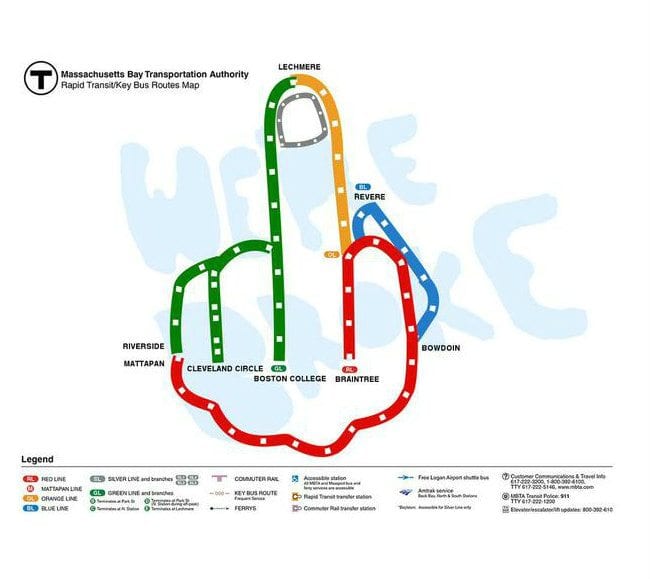Housing advocates say closing commuter rail stations and reducing subway frequency flies in the face of a decade of state housing policy largely designed around the notion that the best place to build new housing in a traffic-choked place like Greater Boston is next to a train stop. Image via the Boston Globe.
– News covered by Quincy Quarry News with commentary added.
Will COVID-19 pandemic MBTA service cuts blow up the regional transit-oriented residential housing building boom?
Given still massive declines in MBTA ridership given the pandemic, the MBTA is losing even more money than usual.
Way more – and thus the powers that be are now seeking ways to stem the MBTA’s financial hemorrhaging.
In turn, recently announced plans by the MBTA to greatly cut its transit services given the COVID-19 pandemic are giving rise to concerns about undermining the ongoing construction boom in so-called Transit Oriented Development and which is one of the relatively few sectors of the economy outside of online retail vendors and streaming services that has not unduly suffered from the pandemic.
In recent years, public policy has variously encouraged developers to build multi-unit residential housing projects within easy walking distance of typically rail public transit stations.
Now, however, not only are the residents of such housing developments facing greatly reduced to outright elimination of public transit service for at least many months to as long as into 2022 or longer given the impacts of the COVID-19 pandemic, these developments have been grifted with often considerably reduced parking requirements per local building codes.
In turn, the residents of Transit Oriented Development housing projects are now looking to be stranded given public transit service cuts, having to buy a car to get around and/or spending more to a lot more on ride sharing.
That and giving rise to all manner of questions, including where those who opt to buy cars in response to the MBTA’s service cuts will park their new rides.
Additionally, with working remotely having become common out of necessity given the pandemic as well as that many companies are looking to continue to rely on working remotely to cut office costs after the pandemic abates, the Transit Oriented Development ethos is further undercut.
Granted, while the disruption caused by the pandemic will probably abate in time, what will follow as the new normal will likely be different from – if not also in at least some ways at odds with – the Transit Oriented Development concept.
Quincy Quarry considered reaching out to the Koch Maladministration for comment given that it has literally bet hundreds of millions in taxpayers-backed bond debt on littering Quincy with outsized transit-oriented residential housing projects with often marginal at best onsite parking capacity; however, while the Quarry knew that the Koch Maladministration would surely talk up how Red Line service would continue, in no way would the Koch Machine admit that the frequency of service would likely be taking a hit as well as that cuts in bus service would likely be driving transit oriented residents to increase their reliance on taxicabs and/or ride sharing services, buying a car, remaining housebound, and/or moving.
Source: MBTA cuts imperil transit-oriented building boom – The Boston Globe





















Almost karma. I don’t want to see T riders left high and dry through no fault of theirs, but if cuts to public transit puts an end to TOD such would OK by me.
Every city and town with public transit has had TOD rammed down their throats by unelected boards. That’s not government by the people — rather, it’s dictatorship.
All of this COVID nonsense needs to end; however, I could enjoy a few more unintended consequences like this one.